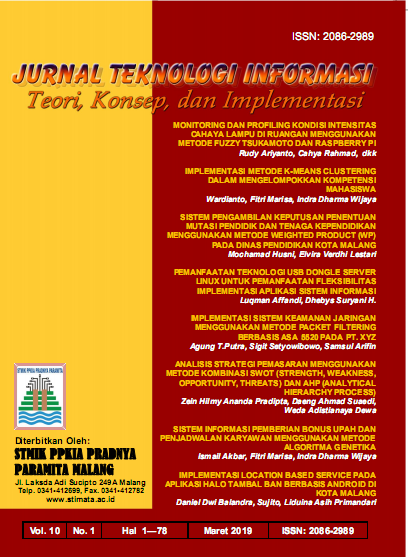PEMANFAATAN TEKNOLOGI USB DONGLE SERVER LINUX UNTUK PEMANFAATAN FLEKSIBILITAS IMPLEMENTASI APLIKASI SISTEM INFORMASI
Abstract
In the construction of a computer software application it takes several stages such as the paths that exist in the Linear Sequential or Waterfall Development Model, prototype, Rapid Application Development (RAD) or other models. One of the stages of these models is that there is a program implementation stage, namely a process of installing an application that is being developed to the server computer or client user so that it can be used. The process of implementing an application must pay attention to the type of application being built, whether the application is desktop, web or mobile based, and each type has a different installation method. This makes it difficult for an application user to implement an application if they do not have sufficient knowledge in the computer field. One way that can be used to realize this is by making a USB dongle in which there are applications, servers, supporting programs and application settings. Program users do not need to install supporting programs and make arrangements.
Keywords: USB, Linux, Information Systems
References
memory stick (USB key), http://di.pascal.at/, tanggal akses: 07 April 2004.
Hall, D. H. Microprocessors And Interfacing : Programming And Hardware, 2nd Edition, New York: McGraw-Hill.
Sanjaya, Ridwan. (2012). Membangun Jaringan Komputer Dengan Linux. Elex Media Komputindo.
Wagito. (2007). JARINGAN KOMPUTER Teori dan Implementasi Berbasis Linux. Yogyakarta: Gava Media




